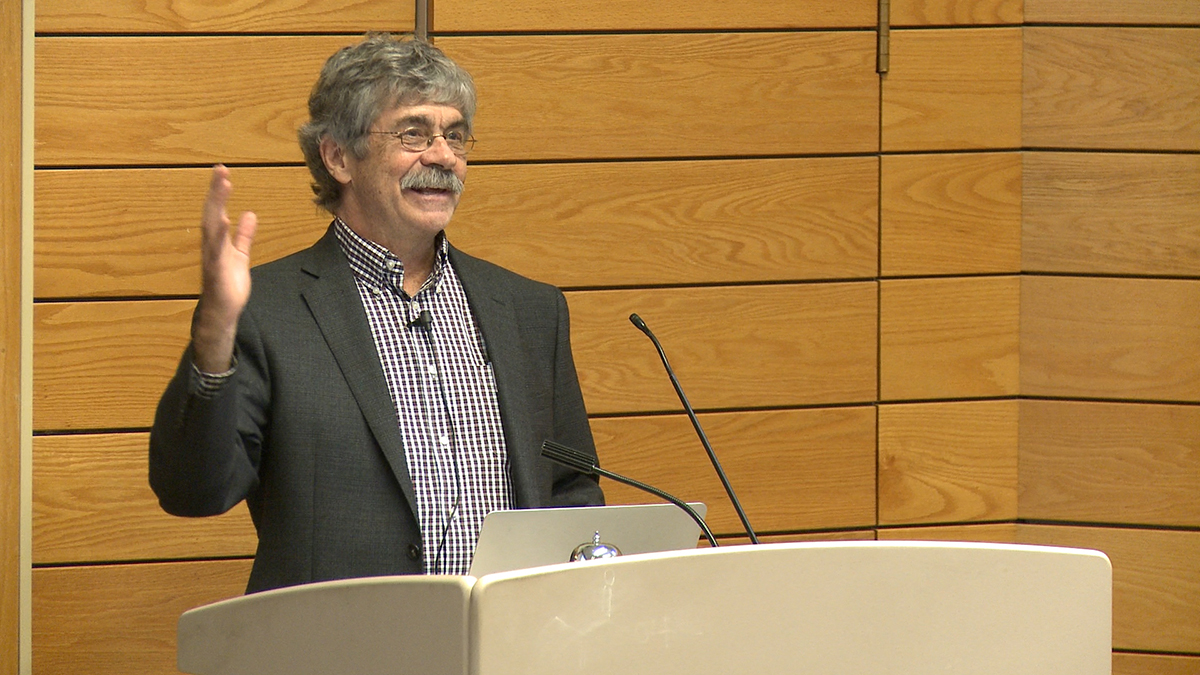Faculty members laud results of active learning initiative
By Kathy Hovis

Three faculty members in the College of Arts and Sciences shared their experiences of transforming their classrooms from traditional lectures to active learning spaces at an Oct. 25 workshop.
In Tomas Arias’ physics classroom, student learning gains have increased significantly since introducing active learning, he said, with a typical B- student now earning a B+ in the class, students learning the material more deeply and student reviews of the class also climbing.
“I became a physicist because I loved doing physics, not because I loved lecturing,” said Arias, professor of physics, who has used active learning in his large introductory physics class. “Now the entire lecture is transferred before class so the lecture time is whole-hog physics. We are doing physics problems the entire lecture.”
Four years ago, the College of Arts and Sciences launched the Active Learning Initiative (ALI) pilot project in three departments, in response to calls from government organizations and professional societies to improve college-level teaching in science and mathematics. The ALI five-year pilot project is funded by Alex and Laura Hanson, both Class of 1987.
In active learning classrooms, students enjoy more hands-on activities and more frequent student-student and student-instructor interactions through methods such as small discussion groups, partner sharing and the use of technology like iclickers and smartphone apps to enhance learning. Students gain the information from the traditional lecture through videos, readings, online exercises and quizzes they do in advance of class.
“If we do this right, then a technology-enhanced approach to education will make our students more engaged in the learning process, less likely to quit and more likely to become empowered and self-actualized learners,” said Gretchen Ritter ’83, the Harold Tanner Dean of the College of Arts and Sciences.
The event coincided with the announcement of new college grants to broaden the college’s effort in the sciences and mathematics to include the social sciences and the humanities. (The college is already funding a small-scale project in anthropology.) Faculty interested in using active learning in their classrooms were invited to attend. The workshop was hosted by Peter Lepage, director of education innovation and professor of physics, and included remarks by Julia Thom-Levy, the provost’s fellow for pedagogical innovation and associate professor of physics.
“I really do believe this is the future of college teaching,” said Ron Harris-Warrick, the William T. Keeton Professor of Biological Sciences in the Department of Neurobiology and Behavior, who has used active learning in a large 175-student introductory class and a smaller 60-student class.
In his active learning classes, Harris-Warrick poses a difficult question, then asks students to answer electronically.
“When they’re done, I don’t share the correct answer, but instead I ask them to get in small groups and talk with one another,” he said. “The room explodes with sound, and the students are all talking at once, using their hands, drawing things on paper. Then they come back and revote, and they’ve gone from 30 percent with the right answer to 80 percent. If I ask another question on the same concept, then pair them, I’ll get up to 95 percent correct.”
Harris-Warrick has seen grade improvements across the board and found the biggest gains come from students who had been receiving poor grades.
“The classes offer many opportunities to engage in creative thinking about science rather than just memorizing facts,” he said. “One student said, ‘Now I know what it is like to be a scientist rather than just learning about science.’”
In Kelly Zamudio’s active learning classroom, students reported feeling more confident in their abilities and more of a part of a classroom community compared with the traditional classroom, said Zamudio, the Goldwin-Smith Professor in the Department of Ecology and Evolutionary Biology.
She said active learning involves advance planning, but it doesn’t have to be complicated.
“I would look at a lecture, decide which learning goal I would focus the activity on, figure out two to three learning concepts to focus on and then plop the activity into the lecture,” she said. Zamudio’s and Harris-Warrick’s departments hired postdoctoral researchers to work with professors to create these activities.
Tools like a portable document camera, a portable digital microscope and a catch box – a soft, throwable microphone – have proven helpful in her classroom.
“I go into my lectures thinking, ‘How am I going to challenge them today,’” Zamudio said. “And I remember that this is an experiment. We are continually manipulating variables and perfecting our teaching.”
Kathy Hovis is a writer for the College of Arts and Sciences.
Media Contact
Get Cornell news delivered right to your inbox.
Subscribe